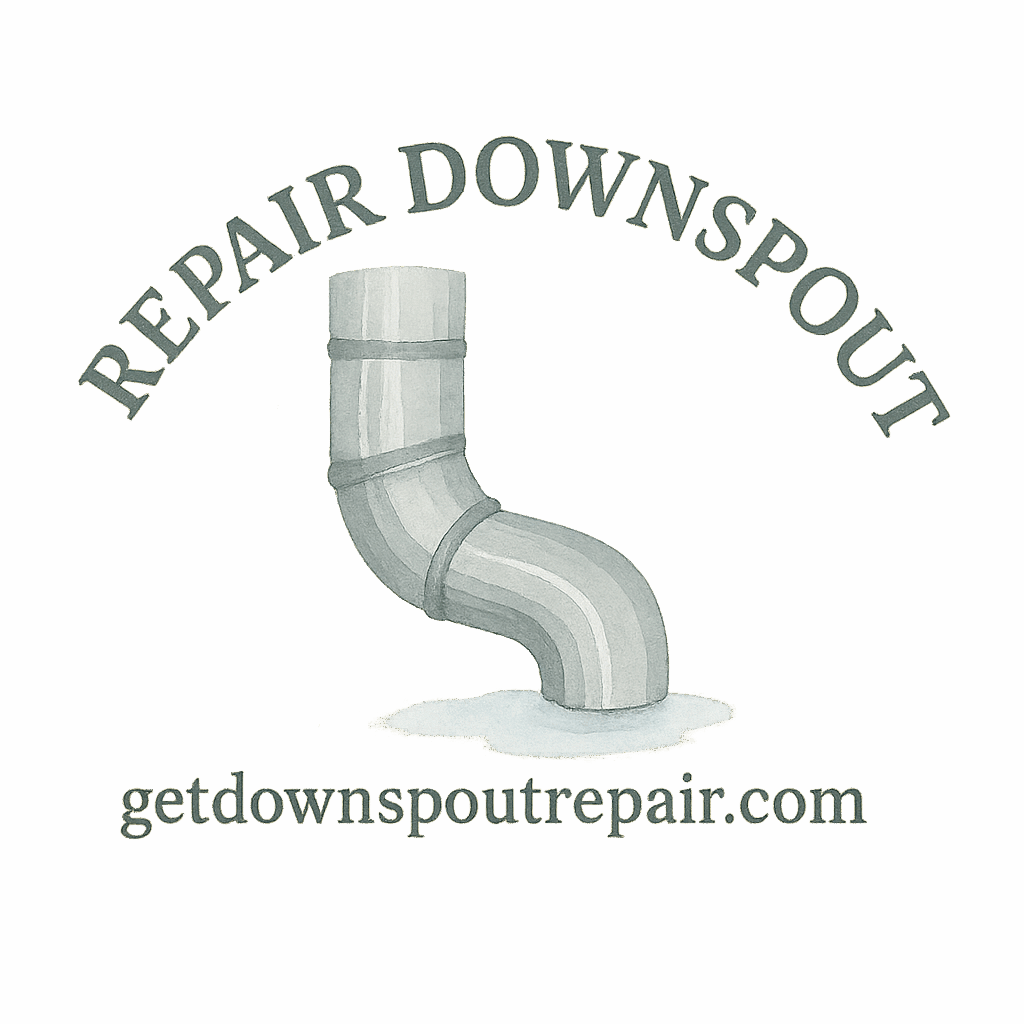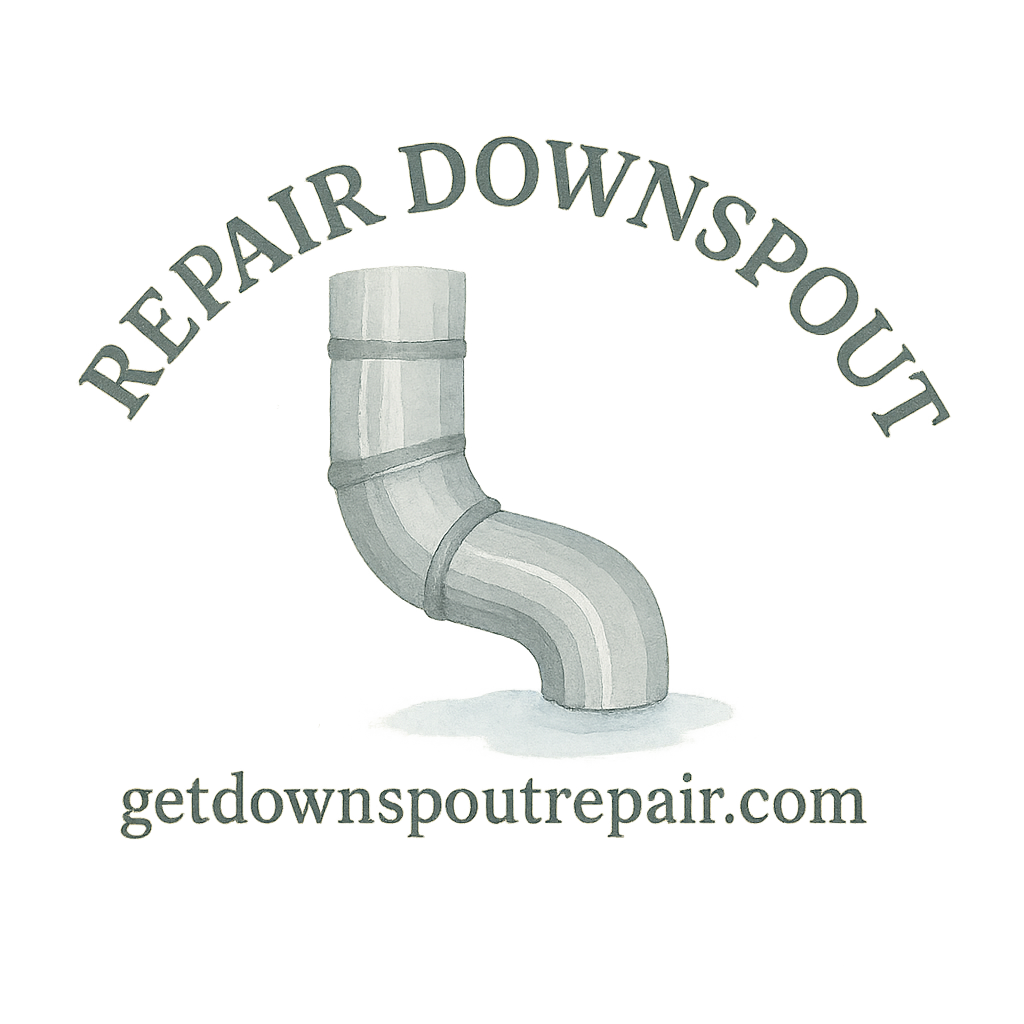Introduction
If you live in a home with a sloped roof, you already know how much rainwater can rush down during a storm. Without a properly working downspout system, all that water can cause serious damage to your foundation, siding, and landscaping. The good news? With a few simple tools and a bit of DIY confidence, you can handle many downspout repairs yourself. In this guide, we’ll walk through 7 DIY downspout repair adjustments for sloped roofs, plus safety tips, long-term prevention strategies, and when it makes sense to call in the pros.
Why Downspout Repair Matters on Sloped Roofs
Sloped roofs are designed to channel water quickly, but if your downspouts aren’t aligned or functioning, that water has nowhere safe to go.
Common Issues with Sloped Roof Drainage
- Downspouts pulling away from the house due to heavy water flow.
- Clogs forming faster because of debris rushing down at steep angles.
- Overflowing gutters spilling onto walls and windows.
Risks of Ignoring Downspout Problems
Ignoring downspout repair can lead to:
- Water pooling around your foundation.
- Basement flooding and mold growth.
- Costly siding or fascia board replacement.
(See more on downspout problems)
Essential Tools and Materials for DIY Downspout Repair
Before jumping in, make sure you’ve got the right gear.
Basic Downspout Repair Tools
At the very least, you’ll need:
- Ladder
- Screwdriver or drill
- Pliers
- Gutter scoop
Explore our repair basics guide for a starter list.
Budget-Friendly Options
If you’re working with a limited budget, check out these budget tips. Affordable sealants and brackets can go a long way without breaking the bank.
Premium Tools for Long-Term Durability
If you prefer top-notch durability, investing in premium tools like stainless steel brackets or high-quality sealants will save you from frequent repairs.
7 DIY Downspout Repair Adjustments for Sloped Roofs
Now let’s get practical. Here are seven DIY adjustments every homeowner can tackle.
1. Reattaching Loose Downspouts
When heavy rainfall pulls your downspouts away from the wall, reattachment is key.
Step-by-Step Process
- Position your ladder securely.
- Remove old, rusted screws or brackets.
- Reattach using new brackets and screws.
- Check stability by gently tugging the downspout.
More details in this repair guide.
2. Fixing Downspout Leaks with Sealant
Leaks usually form at seams or joints.
When Sealant is Enough
If the crack is small, applying a waterproof sealant will do the trick. For bigger damage, you may need replacement sections.
Learn more about DIY fixes.
3. Realigning Sloped Downspouts for Proper Flow
Sometimes downspouts sit at the wrong angle, causing water backup.
Angle and Slope Considerations
Make sure the slope is at least ¼ inch per 10 feet of downspout length. This ensures water flows smoothly without pooling.
4. Adding Extensions to Redirect Water Away
A downspout should release water at least 4–6 feet from your foundation.
Avoiding Foundation Water Damage
Without extensions, you risk basement flooding. Extensions or flexible drain pipes help direct water safely away.
Check out drainage protection for more solutions.

5. Clearing Clogged Downspouts on Sloped Roofs
Sloped roofs funnel leaves, pine needles, and debris quickly into your gutters.
DIY Clog Prevention Tips
- Install gutter guards.
- Flush downspouts with a garden hose.
- Schedule seasonal gutter cleaning.
More tips at prevent clogging.
6. Reinforcing Joints with Brackets and Straps
Loose joints can compromise the entire system.
Preventing Future Loosening
Install additional brackets and straps every 3–4 feet for maximum stability.
Browse repair tools for recommendations.
7. Installing Splash Blocks and Drainage Protection
Water needs a safe landing spot once it leaves your downspout.
Affordable vs Premium Drainage Solutions
- Affordable: Plastic splash blocks.
- Premium: Underground drainage systems.
For more info, explore downspout save strategies.
Safety Tips for DIY Downspout Repair on Sloped Roofs
Ladder Safety
Always use a sturdy ladder, secure it on flat ground, and never stretch too far sideways.
Protective Gear
Gloves and safety glasses are a must—sharp metal edges and falling debris are no joke.
Read more about beginner repair safety.
When to Call a Professional Downspout Expert
Recognizing Major Damage
If you see cracked sections, rust holes, or sagging gutters, a DIY fix may not cut it.
Cost vs DIY Savings
Yes, DIY saves money, but sometimes hiring a licensed contractor is more cost-effective in the long run.
Explore professional help.
Preventing Future Downspout Problems
Regular Gutter Cleaning
A seasonal gutter cleaning routine is the easiest prevention method.
Seasonal Inspections
Check brackets, joints, and downspout flow at least twice a year.
Choosing Quality Products
Using quality products ensures fewer breakdowns and longer-lasting protection.
Conclusion
Sloped roofs are fantastic for quick water runoff, but without proper downspout maintenance, that same advantage can quickly turn into a headache. By following these 7 DIY downspout repair adjustments for sloped roofs, you’ll protect your home from water damage, save money, and extend the life of your gutter system. Start with small fixes, stay consistent with maintenance, and don’t hesitate to bring in a pro when needed.
For more in-depth guides, visit Get Downspout Repair.
FAQs
Q1: How often should I inspect downspouts on a sloped roof?
At least twice a year—once in spring and once in fall.
Q2: What’s the easiest way to prevent downspout clogs?
Install gutter guards and perform regular cleaning.
Q3: Can I use regular caulk to fix leaks?
No, always use outdoor-grade waterproof sealant.
Q4: How far should downspout extensions carry water away?
Ideally 4–6 feet from your foundation.
Q5: What’s the difference between DIY repair and hiring a pro?
DIY saves money but requires time and tools. Pros bring expertise and warranties.
Q6: Do sloped roofs cause more downspout problems?
Yes, because water moves faster and carries more debris.
Q7: Can I handle downspout repairs alone, or should I get help?
For small fixes, solo work is fine, but always have someone nearby when using ladders.


